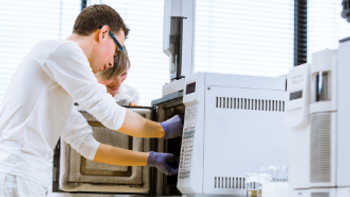
Two-Color Femtosecond Laser Ion Mass Spectrometry Used for Analysis of Carcinogenic Compounds
Nitrated polycyclic aromatic hydrocarbons (nitro-PAHs) are suspected to be carcinogenic, and improvements are sought to improve gas chromatography–mass spectrometry (GC–MS) methods traditionally used for this analysis.
New research in the journal Talanta illustrates the use of an ultraviolet (UV) femtosecond laser as an ionization source in the process of analyzing nitrated polycyclic aromatic hydrocarbons (nitro-PAHs), compounds which are found in the environment and thought to be highly carcinogenic and mutagenic (1). The UV laser was combined with a miniature time-of-flight (TOF) mass analyzer and time-correlated ion counting system, with select UV laser pulses utilized for both single- and two-color multiphoton ionization (MPI).
Two-color MPI with a time-of-flight (TOF) mass analyzer and a time-correlated ion counting system is a powerful mass spectrometry technique. In this method, two laser beams of different wavelengths are employed to ionize the sample molecules. The first laser beam, called the "pump" beam, excites the molecules to higher energy states. The second laser beam, referred to as the "probe" beam, ionizes the excited molecules through multiphoton absorption. The resulting ions are then accelerated through a TOF mass analyzer, where they are separated based on their mass-to-charge ratio (m/z) and detected by a time-correlated ion counting system. The time-correlated ion counting system precisely measures the arrival time of each ion, allowing for accurate determination of the mass and abundance of the ions in the sample. This combination of two-color MPI, TOF mass analysis, and time-correlated ion counting enables sensitive and high-resolution analysis of complex samples.
Researchers from Kyushu University in Fukuoka, Japan said in the study that gas chromatography coupled to mass spectrometry (GC–MS) is most frequently deployed for trace analysis of nitro-PAHs but that current MS electron ionization techniques may not allow for the formation of molecular ions. The processes used for this UV laser experiment, however, did result in the formation of a molecular ion (1).
Nitro-PAHs are directly produced, according to the researchers, not only by combustion of fossil fuels but also by chemical reactions of nitro-PAHs with atmospheric pollutants, such as oxone (O3) and nitrogen dioxide (NO2), although the researchers said the potency of transformations in the environment are somewhat up for debate. Humans who inhale nitro-PAHs, even at low concentrations compared to regular polycyclic aromatic hydrocarbons (PAHs), may be exposed to oxidative stress that increases the risk of cardiovascular disease (1).
Some concessions were made to optimize the determination of nitro-PAHs in this research. The authors said the nitro-PAHs were actually converted into amino-PAHs for more selective and sensitive detection prior to mass analysis, since nitro-PAHs tend to have shorter lifetimes (1). The original suggestion for the experiment was for analytes to be ionized around a measurement of 200 nm, but because of background signal interference, this was revised to the near-UV region of 345 nm.
Overall, 14 nitro-PAHs were observed in this study based on single-color ionization at 343, 257, and 206 nm, and two-color ionization at 343 and 257 nm (1). Their measurement by femtosecond laser ionization mass spectrometry (fsLIMS) was considered by the researchers to be superior to that of electron ionization mass spectrometry (EIMS) in terms of recognizing a molecular ion, since optimizing the laser wavelength can reduce excess energy. The practicality of the technique was further demonstrated by the nitro-PAHs being able to be determined on a two-dimensional GC–MS display while contained in a standard reference material. Finally, the compact fsLIMS system used in this application was thought to have better real-world potential than a large fsLIMS with a more complex titanium:sapphire (Ti:Al2O3) laser system.
Reference
(1) Wen, L.; Yoshinaga, K.; Imasaka, Tot.; Imasaka, Tom. Trace analysis of nitrated polycyclic aromatic hydrocarbons based on two-color femtosecond laser ionization mass spectrometry. Talanta 2023, 265, 124807. DOI:
Newsletter
Join the global community of analytical scientists who trust LCGC for insights on the latest techniques, trends, and expert solutions in chromatography.




